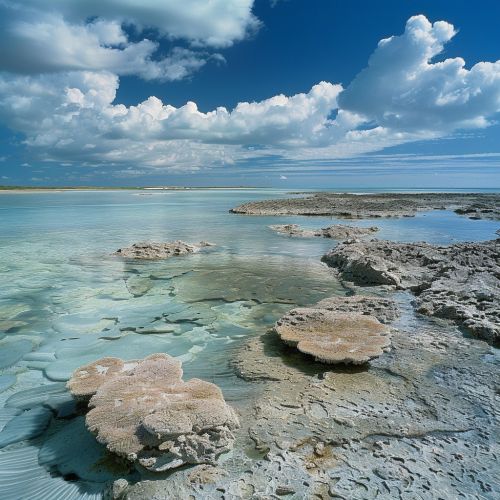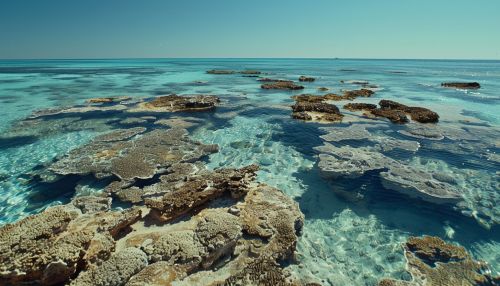Stromatolites
Introduction
Stromatolites are layered sedimentary formations that are created by the growth of layer upon layer of cyanobacteria, a single-celled photosynthesizing microbe. These microorganisms, which are among the earliest life forms on Earth, are still present today and continue to form stromatolites in certain areas of the world.


Formation and Structure
Stromatolites form in shallow water by the trapping, binding, and cementation of sedimentary grains by biofilms of microorganisms, especially cyanobacteria. They exhibit a variety of forms and structures, from conical to stratiform, and range in size from less than a centimeter to several meters in height and width. The structure of a stromatolite consists of layers of cyanobacteria and trapped sediment. This layered structure is the most obvious visual feature of stromatolites.
Historical Significance
Stromatolites are significant because they are the earliest fossil evidence of life on Earth. They first appeared in the Archean Eon about 3.5 billion years ago. The cyanobacteria that form stromatolites were the first organisms to produce an oxygenated atmosphere. This oxygen-rich atmosphere was crucial for the development of more complex life forms.
Modern Occurrences
Today, living stromatolites are found in only a few locations worldwide. The most famous of these is Shark Bay in Western Australia. Other locations include the Bahamas, the Persian Gulf, and the Gulf of California. These modern stromatolites are a key to understanding the nature and evolution of the early biosphere.
Research and Studies
Stromatolites are of great interest to the scientific community as they provide a record of the interaction between the biosphere and the earth's physical environment. Studies on stromatolites not only provide information about the evolution of life on Earth but also give insights into the potential for life on other planets.
